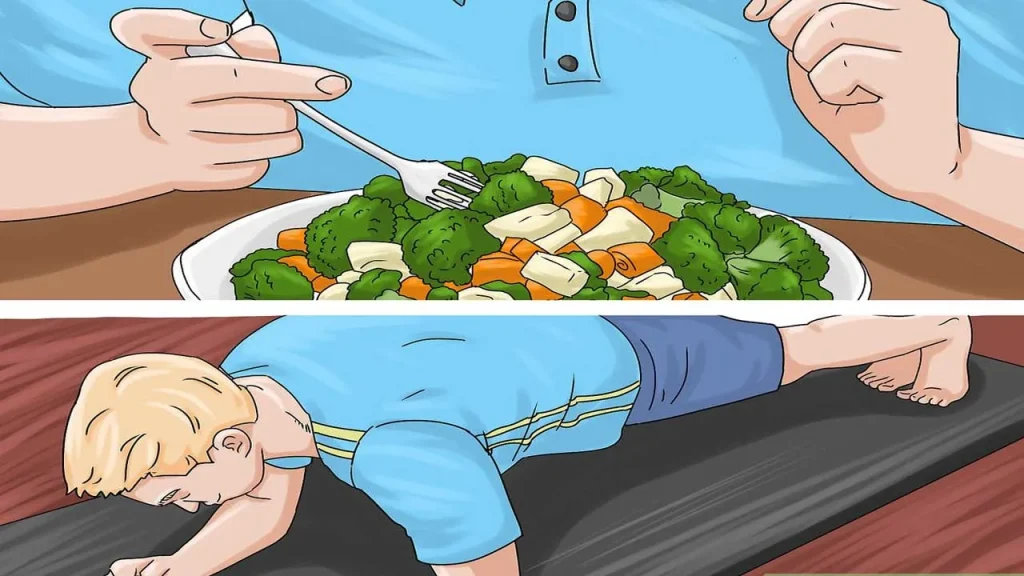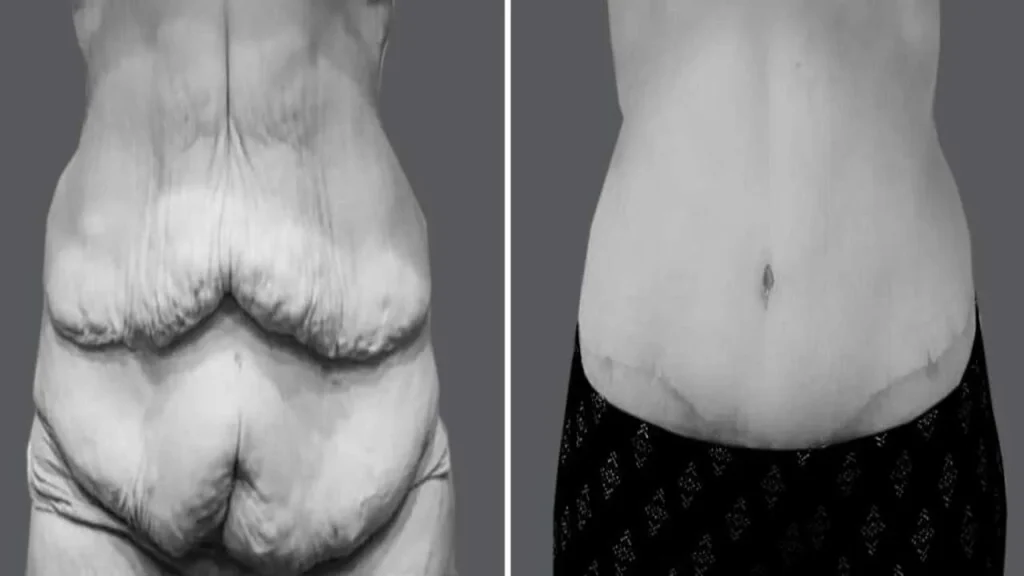How to Shrink Skin After Weight Loss Natural Tips, Non-Surgical Options, and When to Consider Surgery
As an expert who has guided many through their weight loss journeys, I know that shedding pounds is only part of the process. One of the most common challenges people face afterward is dealing with loose, sagging skin. After all the hard work, it can be frustrating when your skin doesn’t immediately snap back. But don’t worry you’re not alone, and there are ways to shrink skin after weight loss. In this post, I’ll walk you through the reasons why skin becomes loose, the natural methods that can help tighten it, and when to consider non-surgical or surgical options. With the right approach, you can not only improve your skin’s appearance but also restore your confidence.
Whether you’re looking for simple lifestyle changes, diet adjustments, or advanced treatments, the key is to understand the factors that affect your skin’s elasticity. Everyone’s body is different, and what works for one person may not be the same for another. Let’s explore the most effective strategies for achieving a smoother, firmer body and reclaiming the confidence that comes with it!
Why Does Skin Become Loose After Weight Loss?
When you lose weight, your skin may struggle to keep up with your body’s new shape. Skin is made of collagen and elastin, which give it strength and elasticity. As you gain weight, your skin stretches to accommodate the extra fat, but when you lose weight especially quickly the skin doesn’t always snap back. The skin loses its ability to tighten as effectively, particularly in areas where fat was more concentrated, like the stomach, arms, and thighs. This is why many people look for ways to shrink skin after weight loss.

Factors That Influence Loose Skin
Other factors can contribute to loose skin after weight loss, including:
- Age: As we get older, the skin’s ability to tighten becomes less effective due to a decrease in collagen production.
- Genetics: Some people are genetically predisposed to have more elastic skin than others, making it easier for their skin to bounce back.
- Extent of Weight Loss: Losing 100 pounds or more increases the likelihood of experiencing excess skin, especially if the weight loss is rapid.
- Skin Quality: People with dry, sun-damaged, or poorly maintained skin might notice more sagging.
How Long Does It Take for Skin to Shrink After Weight Loss?
The time it takes for skin to shrink after weight loss can vary depending on several factors, including the extent of weight loss, your age, and how quickly the weight was lost. For some, the skin may begin to retract gradually over time, especially if weight loss occurs slowly. However, for others, especially those who experience rapid weight loss, the process can take longer.
In general, it may take anywhere from a few months to a year for skin to shrink after weight loss. If the weight loss was gradual, your skin will have more time to adjust. If the weight loss was significant or rapid, such as through bariatric surgery or medications like Ozempic, it could take longer for your skin to tighten. While some people notice improvements within a few months, others may need non-surgical treatments or even surgery to help shrink skin after weight loss for more significant results, especially in areas like the abdomen, thighs, and arms.
It’s important to remember that skin shrinkage also depends on skin elasticity, which decreases with age and can be affected by genetics. Factors like hydration, diet, and exercise also play a crucial role in how quickly the skin adapts to the body’s new shape.
Natural Ways to Shrink Skin After Weight Loss
After weight loss, many individuals look for natural methods to help shrink skin after weight loss and improve skin elasticity. While there are no quick fixes, incorporating a few lifestyle changes can make a significant difference in how your skin reacts to the body’s new shape. Here are some effective, natural ways to help tighten loose skin:

- Hydration is Key
Drinking plenty of water is one of the easiest and most effective ways to support skin health. Skin that is properly hydrated remains more elastic, helping it shrink and adjust to its new size. Aim to drink at least 8 glasses of water a day to keep your skin moisturized from the inside out. - Massage and Skin Firming Lotions
Regularly massaging areas with loose skin can help improve circulation and stimulate collagen production. Using skin-firming lotions or oils that contain ingredients like retinoids, hyaluronic acid, and vitamin E may help moisturize and firm up the skin. While results vary, these can provide temporary tightening effects when used consistently. - Sun Protection
Protecting your skin from harmful UV rays is essential in maintaining its elasticity. Sun exposure accelerates the breakdown of collagen, which can worsen the appearance of sagging skin. Make sure to apply sunscreen with SPF 30 or higher daily to prevent further damage.
By incorporating these natural methods into your routine, you can help shrink skin after weight loss over time. While these approaches might not provide immediate results, they offer sustainable ways to improve the overall tone and texture of your skin.
How Diet and Exercise Affect Skin Tightening
Diet and exercise play crucial roles in how effectively you can shrink skin after weight loss and improve skin elasticity. While non-surgical treatments can help, these two factors help support your skin from the inside out, promoting better tone, texture, and firmness. Here’s how they can impact skin tightening:

The Role of Diet in Skin Health
A healthy diet is essential for maintaining skin health and supporting its elasticity, especially when you’re looking to shrink skin after weight loss. Nutrients like protein, vitamins, and healthy fats are crucial for collagen production and skin repair, which helps tighten loose skin. Some key dietary factors that impact skin health include:
- Protein: Collagen and elastin, which are the proteins responsible for skin’s elasticity, rely on amino acids found in protein-rich foods. Include lean meats, fish, eggs, beans, and nuts to support skin regeneration.
- Vitamins C and E: These vitamins are vital for collagen synthesis and protecting the skin from damage. Citrus fruits, berries, leafy greens, and almonds are great sources.
- Healthy Fats: Omega-3 fatty acids found in foods like salmon, walnuts, and flaxseeds help maintain skin hydration and elasticity, making your skin more supple and less prone to sagging.
The Impact of Exercise on Skin Tightening
Regular physical activity, particularly strength training, can have a direct effect on how your skin responds after weight loss. Exercise helps build muscle mass underneath the skin, which helps fill out loose areas and improves the skin’s overall appearance. Strength training, in particular, helps to tighten skin by stimulating collagen production and enhancing skin elasticity. Cardio exercises can also support skin health by improving blood circulation, which delivers essential nutrients to the skin, promoting a firmer and healthier look. By combining exercise with healthy habits, you can effectively shrink skin after weight loss and improve its firmness.
Here’s a table of effective strength training exercises to target specific areas:
| Exercise | Target Area | Descriptions |
| Squats | Legs, Glutes | Lower and raise your body as if sitting in a chair. |
| Push-ups | Upper Arms, Chest | Lower body to the ground, then push back up. |
| Planks | Core Arms | Hold a push-up position, keeping your body straight. |
| Lunges | Thighs, Glutes | Step forward, bend knees, then return. |
| Bicep Curls | Upper Arms | Curl weights toward shoulders and lower slowly. |
| Leg Raises | Abs, Thighs | Lift legs to the ceiling, then lower slowly |
This combination of strength training and muscle building will help improve your skin’s firmness, making it more likely to tighten and adapt to your new body shape, helping you effectively shrink skin after weight loss.
Non-Surgical Treatments for Tightening Skin
While surgery offers a permanent solution for shrinking skin after weight loss, many individuals prefer non-invasive options that require less recovery time and fewer risks. Non-surgical treatments can help tighten and tone loose skin, improving its elasticity and appearance. These treatments are especially effective for those who have mild to moderate skin laxity. Here are some popular non-surgical methods for tightening skin after weight loss:

Radiofrequency (RF) Therapy: Radiofrequency therapy uses heat to stimulate collagen production in the deeper layers of the skin, promoting tighter and firmer skin. This non-invasive treatment can be performed on various areas of the body, including the face, abdomen, arms, and thighs. RF therapy is effective for tightening skin without causing damage to the outer layer, offering gradual improvement over several sessions.
Ultherapy (Ultrasound Therapy):Ultherapy is a non-invasive procedure that uses focused ultrasound energy to stimulate collagen and elastin production deep within the skin. It targets the lower layers of the skin to lift and tighten the tissue, making it an effective treatment for the face, neck, and chest. Ultherapy is ideal for individuals with mild to moderate skin laxity, as it gradually improves skin firmness over a few months.
Microneedling with Radiofrequency:Microneedling combined with radiofrequency is a cutting-edge treatment that uses tiny needles to create micro-injuries in the skin, which triggers the body’s natural healing process. When combined with radiofrequency, the treatment stimulates collagen production and tightens the skin. This method is ideal for improving skin texture and elasticity, making it a popular choice for individuals looking to shrink skin after weight loss without surgery.
CoolSculpting for Skin Tightening: CoolSculpting is primarily known for its ability to reduce fat, but it also has a secondary effect on skin tightening. The cold temperatures used during the treatment can help tighten the skin by stimulating collagen production in the treated areas. This is a great option for those who want to address stubborn fat deposits and improve the appearance of loose skin in areas like the abdomen and thighs.
Laser Skin Tightening: Laser skin tightening uses focused light energy to stimulate collagen production and tighten the skin. This treatment is commonly used on the face, neck, and abdomen to reduce sagging and improve skin texture. Laser treatments can promote firmer, more youthful-looking skin with minimal downtime. However, multiple sessions are often required to see significant improvements.
Emsculpt® NEO for Muscle Toning: Emsculpt® NEO is a revolutionary treatment that combines high-intensity focused electromagnetic (HIFEM) energy with radiofrequency to both tighten the skin and build muscle. This treatment is ideal for tightening skin in areas like the abdomen, thighs, and buttocks while simultaneously enhancing muscle tone. Emsculpt® NEO is an excellent choice for those looking to shrink skin after weight loss while also improving overall muscle definition.
Results and Recovery: One of the main advantages of non-surgical treatments is the minimal recovery time. Most of these treatments have little to no downtime, allowing you to resume your daily activities right away. The results, however, are gradual, and multiple sessions may be necessary to achieve optimal skin tightening. While results vary from person to person, many individuals see noticeable improvements within a few months.
Non-surgical treatments for tightening skin after weight loss offer a great alternative to surgery, especially for those who prefer a less invasive approach. Depending on your needs and goals, these treatments can help improve skin elasticity, enhance your appearance, and boost your confidence.
When to Consider Surgery for Shrinking Skin After Weight Loss?
Surgery for shrinking skin after weight loss may become a consideration when non-surgical methods, such as diet, exercise, and non-invasive treatments, are no longer enough to achieve the desired results. If you’ve lost a significant amount of weight and are still experiencing excessive loose skin that hinders your daily activities or affects your confidence, it might be time to explore surgical options. Factors such as the amount of skin, the areas affected, and the duration of time since your weight loss will help determine if surgery is the right choice.
If you’re at or near your goal weight and have maintained that weight for a stable period, it may be a good time to discuss surgical options with a qualified surgeon. Individuals who experience discomfort, pain, or hygiene issues due to excess skin, or those who feel emotionally distressed by their appearance, may benefit from surgery to remove the sagging skin. Consulting with a board-certified plastic surgeon is essential in determining the best approach, as they can assess your specific needs, offer a personalized treatment plan, and explain the risks, benefits, and expected recovery time for procedures that will help shrink skin after weight loss.
Surgical Options to Shrink Skin After Weight Loss
For many who have experienced significant weight loss, loose, sagging skin may not improve through natural methods alone. In such cases, surgical options offer a more permanent solution to tighten and tone the skin, remove excess skin, and restore confidence. These surgical options to shrink skin after weight loss provide effective results for individuals looking to achieve a smoother, firmer body. Here are the most common surgical options for shrinking skin after weight loss:

Tummy Tuck (Abdominoplasty): A tummy tuck is ideal for those who have lost a substantial amount of weight, particularly around the abdominal area. This surgery removes excess skin and tightens the abdominal muscles, resulting in a firmer and flatter appearance. If you’re struggling with sagging skin in your midsection and want a more sculpted waistline, a tummy tuck can deliver dramatic results.
Body Lift: A body lift addresses loose skin around multiple areas of the body, including the abdomen, buttocks, thighs, and hips. This procedure lifts and tightens the skin, removing sagging folds commonly caused by rapid or significant weight loss. It’s especially helpful for individuals who have lost a large amount of weight and are dealing with excess skin in various regions of their body.
Arm Lift, Breast Lift, Thigh Lift, and Facelift
Excess skin on the arms, breasts, thighs, and face is a common concern after weight loss.
- Arm Lift (Brachioplasty): This procedure removes loose skin and tightens the tissue around the upper arms, often referred to as “bat wings.” It’s perfect for those who have sagging skin in the arms despite efforts in diet and exercise.
- Breast Lift (Mastopexy): Many individuals notice sagging and volume loss in the breasts after weight loss. A breast lift can restore the breasts’ shape by removing excess skin and tightening the remaining tissue, offering a more youthful appearance. Some may opt for breast implants to add volume.
- Thigh Lift: If you’ve lost weight and experience sagging skin on the thighs, a thigh lift can remove excess skin from the inner or outer thighs, contouring and tightening the area. This procedure helps to smooth and firm the legs, improving overall appearance.
- Facelift (Rhytidectomy): Loose skin around the face and neck can cause sagging along the jawline. A facelift removes excess skin and tightens the underlying muscles, providing a youthful and contoured look, especially after significant weight loss.
Panniculectomy: A panniculectomy focuses on removing the “apron” of skin and fat from the lower abdomen. Unlike a tummy tuck, it doesn’t address muscle tightening but is often medically necessary after bariatric surgery or extreme weight loss. This procedure may be covered by insurance.
Surgical options to shrink skin after weight loss are an excellent way to permanently tighten and tone skin, helping individuals achieve the body shape they’ve worked hard to attain. However, it’s essential to consult with a qualified, board-certified plastic surgeon to discuss your goals, risks, and expectations before proceeding with surgery.
Emotional Impact of Shrinking Skin After Weight Loss
After losing a significant amount of weight, many individuals face the emotional challenge of dealing with loose, sagging skin. Despite the physical transformation, the presence of excess skin can make it feel like the journey isn’t complete, causing frustration and self-consciousness. This emotional impact of shrink the skin after weight loss can lead to feelings of disappointment, especially when the skin doesn’t tighten as expected, affecting overall self-esteem.

It’s important to recognize that these emotional challenges are a natural part of the process. While loose skin may feel discouraging, embracing the positive changes and seeking support whether through non-surgical treatments or counseling help manage these feelings. Focusing on the progress made and taking steps to address skin concerns can ultimately help individuals feel more confident and satisfied with their weight loss journey.
Conclusion
Losing weight is a transformative journey, but for many, the emotional and physical challenges don’t end with shedding the pounds. Loose, sagging skin after weight loss can affect both your self-esteem and confidence. While natural methods, diet, and exercise can help improve skin elasticity over time, non-surgical treatments and, in some cases, surgery offer more permanent solutions to shrink skin after weight loss.
It’s important to consider all available options, from staying hydrated and building muscle to exploring RF therapy or even surgical procedures when necessary. Embracing your weight loss achievements, while addressing skin concerns, can help you feel confident and proud of your transformation. With the right approach, you can achieve not just a healthier body, but a healthier mindset as well.

